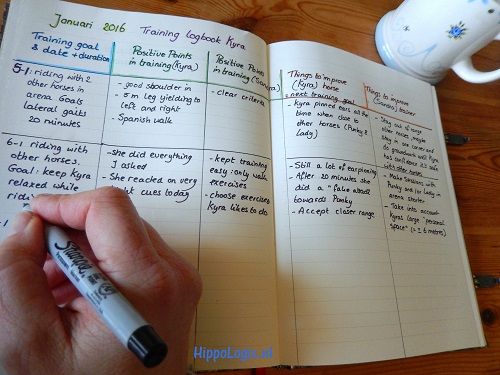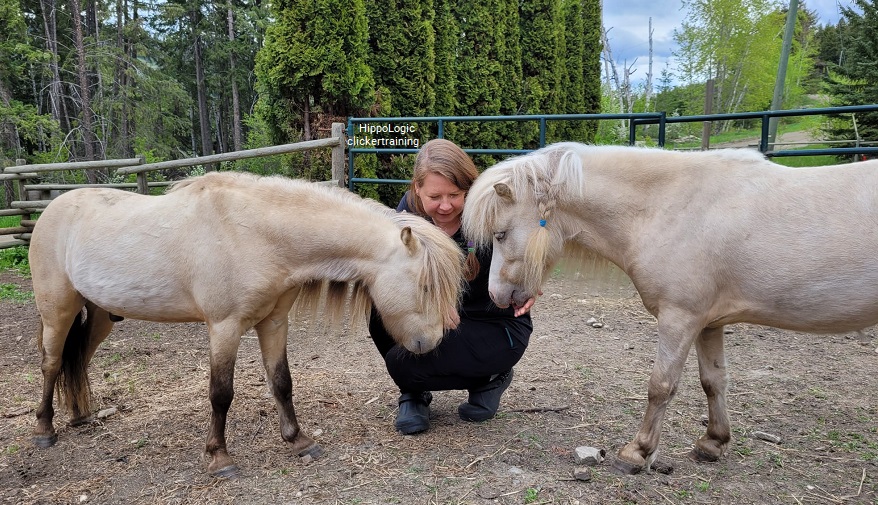
In this series I will be sharing 6 interesting facts I didn’t know about when I started using positive reinforcement in training animals. This is part 5. I like this one!
Some of these are common misunderstandings people have about clicker training while others are facts most equestrians don’t know at all.
The goal of this blog is to help more people understand how well positive reinforcement (R+) works in training our horses. I want every one to know that clicker training offers more great benefits besides training your goal behaviour. Positive side-effects you won’t get in negative reinforcement (R-) based training methods (traditional and natural horsemanship). I wish I had known these benefits earlier in life.
#5 Positive reinforcement has many smart training strategies that I haven’t found in other training methods

In the decades that I have been using positive reinforcement training I have discovered so many smart training strategies that I haven’t heard of in other methods.
This is what I learned in the first 20 years in horses
In traditional and natural horsemanship training the aim was to create more of the desired behaviour by taking away something the horse dislikes (an aversive). Therefor, the solution I was offered ,when a horse wouldn’t obey, was to ‘ask again but increase the pressure’ (the aversive): eg more leg! If that didn’t work: a tap with the whip. Increasing the command until my horse would go. The myth I learned was: ‘He (your horse) knows what to do.’
If a horse didn’t cooperated in taking an oral de-wormer, you just tied him up so he couldn’t pull his head away. Which most of the time resulted in a bigger struggle next time. The myth I was told (and I believed) was: ‘He will soon learn that this doesn’t kill him’.
Sounds familiar?

In general the ‘solution’ was often the same (more ‘pressure’) and only aimed to short-term success (the now). Basically the go-to solution was using more coercion, often painful. Rewards must be ‘only sparingly used’ otherwise ‘I would spoil the horse’.
Positive reinforcement expands your horizon
In positive reinforcement the aim is to train the horse by reinforcing the desired behaviour with something the horse wants to receive/have (appetitive). You focus on the good things!
So, when my horse doesn’t offer the desired behaviour I immediately start asking questions. Not the “How can I make the good thing easy and the bad thing difficult?”-question (which often means “How can I -the trainer- get to my goals ASAP?), but many questions. Horse-centered questions:
- Why does my horse not cooperate?
- Has my reinforcer (my reward) lost it’s value?
- Is something else more reinforcing or urgent?
- Am I clear in what I want my horse to do?
- How can I make it easier and more fun (!) for my horse?
- Does my horse understands what I want (Am I lumping? Is there a context shift? Is he distracted? Bored? Anxious or in flight mode?)
- and so on
Training strategies
Then you have those smart training strategies that really help achieving your goals and goal behaviour, like:
- positive reinforcement: reinforcing with appetitives (something the horse really wants to have and want to make an effort for to get it)
- 5 strategies to get your goal behaviour with R+
- writing a shaping plan (detailed step-by-step approach of training your goal behaviour)
- the use of a bridge/marker signal to pinpoint exactly what you want to see more of
- the use of high and low value reinforcers to increase engagement, decrease stress levels, prevent boredom and predictability in training and so on
- ‘jackpots’
- chaining behaviour
- back chaining behaviour

Except for the use of rewards I never heard of any of the above strategies until I learned more about positive reinforcement. A few of these are really your Key to Success in Equine Clicker Training. If you want to learn more join my Clicker Training Academy where you learn all 12 Keys to Success in Clicker Training.
It makes life so much easier that I can’t picture training horses or coaching people without these strategies.
Read the other articles in this series:
part 1 of 6 Things You Might Not Know About Clicker Training
part 2
part 3
part 4
part 5
part 6
Sandra Poppema, BSc
Founder of HippoLogic
Enhancing Horse-Human connections through clicker training

Follow me on Facebook, Instagram or watch a video on HippoLogic’s YouTube channel.
Don’t miss out on courses and clicker tips in your inbox or get my free online course.
***NEW***
Have you heard of the HippoLogic Clicker Challenge Community?
Register today for our Online Equine Clicker Challenge Community
Each month a new Clicker Challenge
Goal: Develop your clicker skills in a fun & supportive community
Discover your strengths and boost your confidence in your Clicker Skills each month. I guarantee you that you will walk away with practical tweaks that you can apply to all your other training and that your horse loves to work with YOU!




You must be logged in to post a comment.